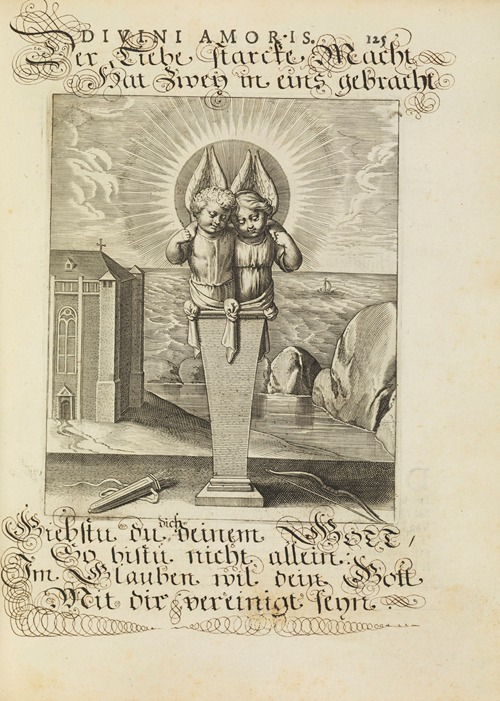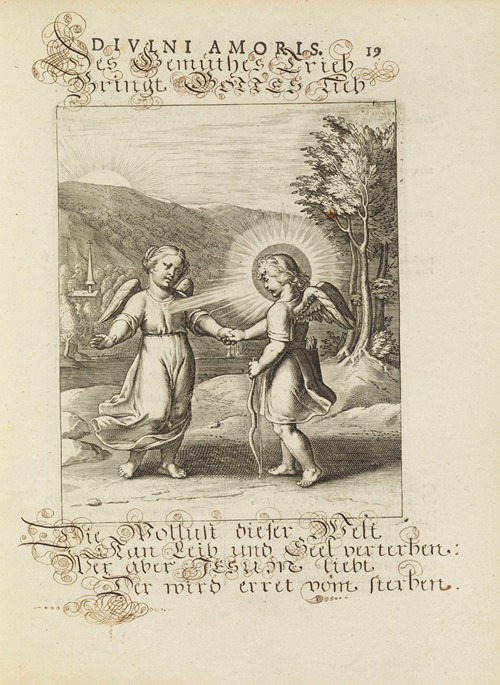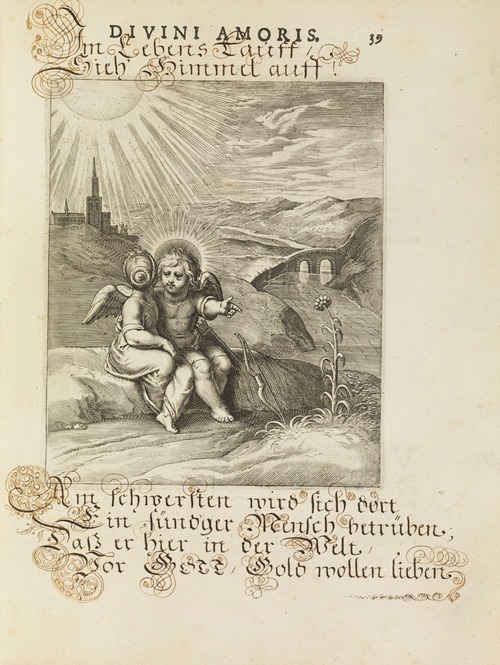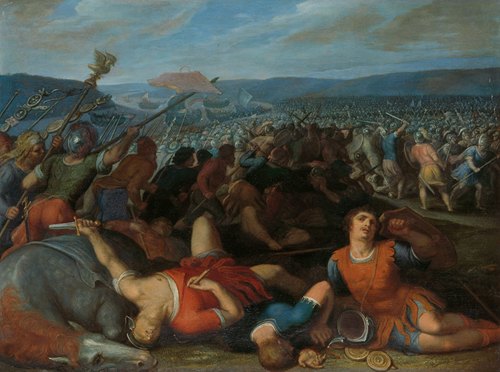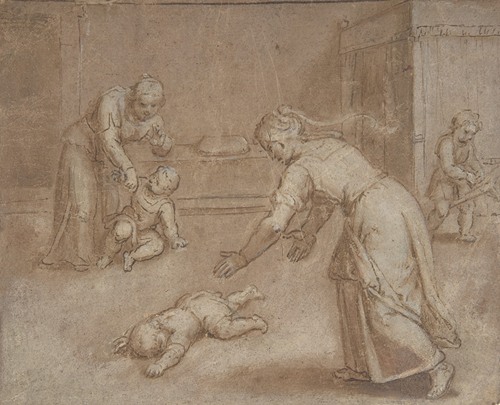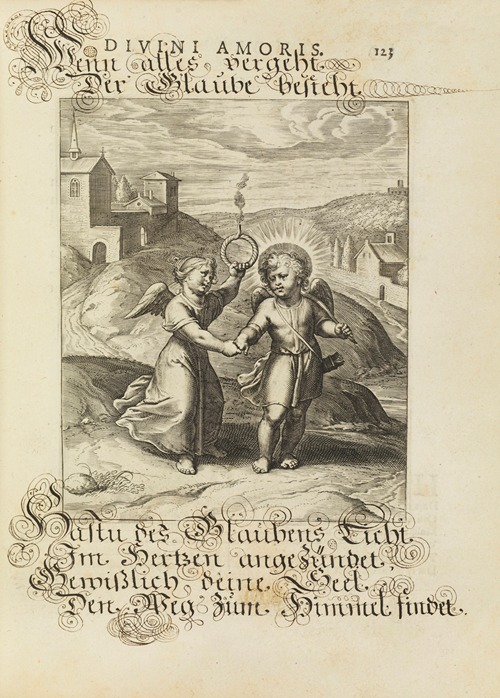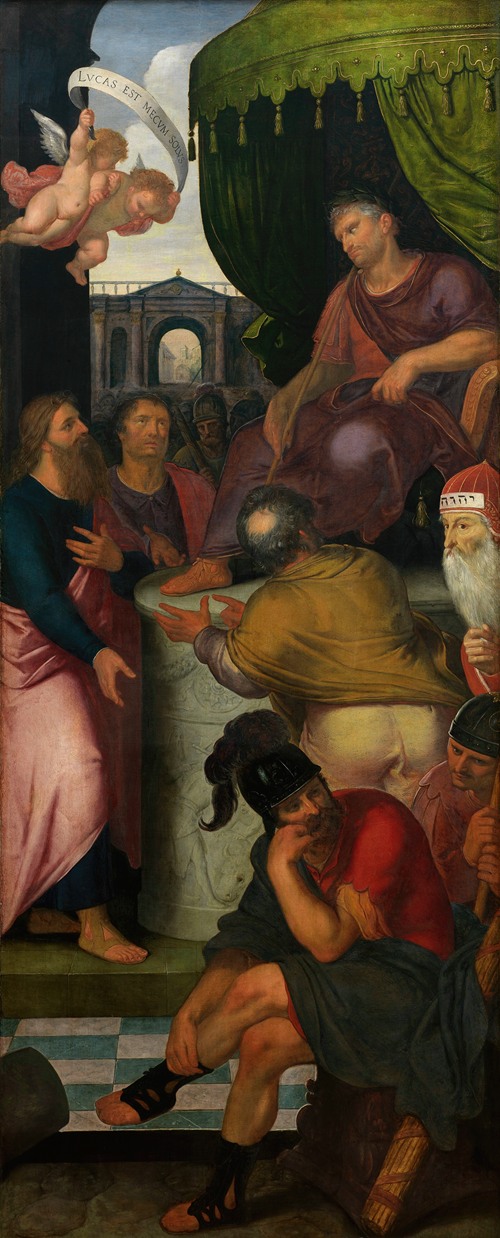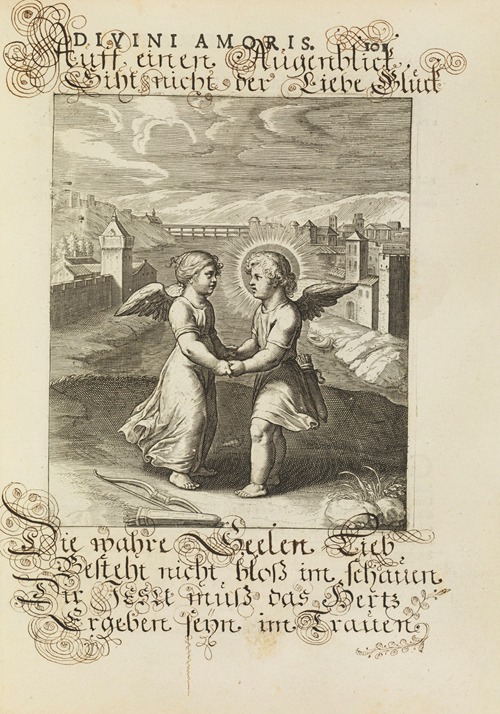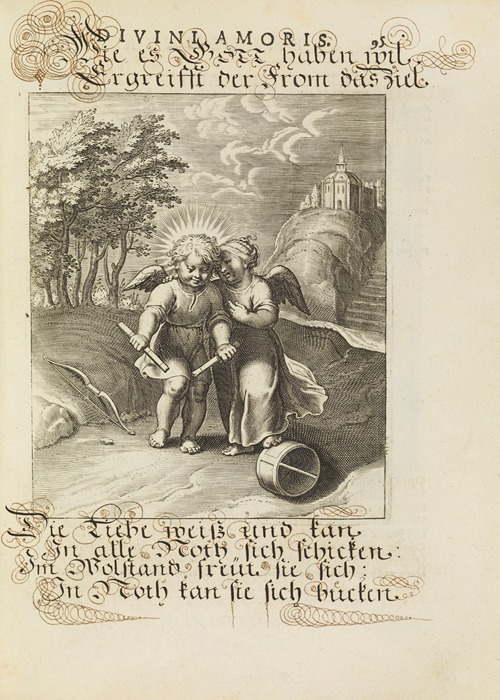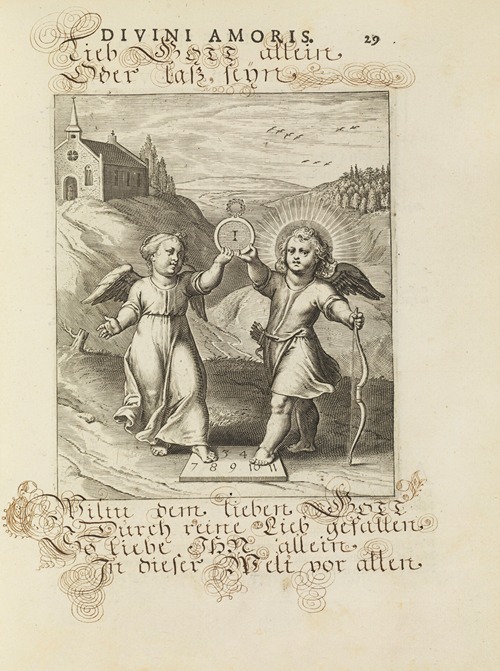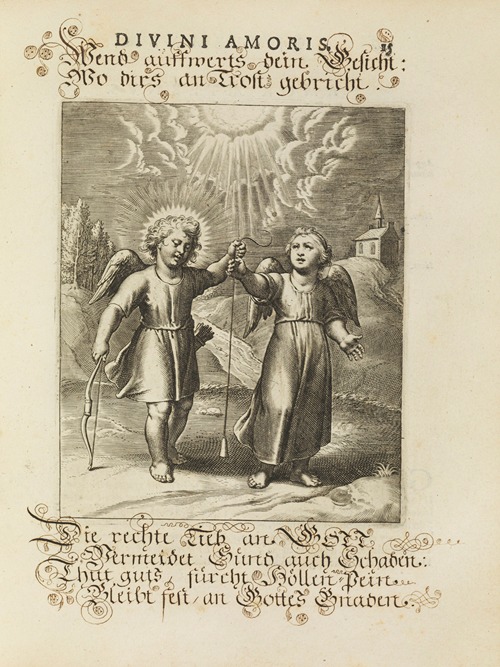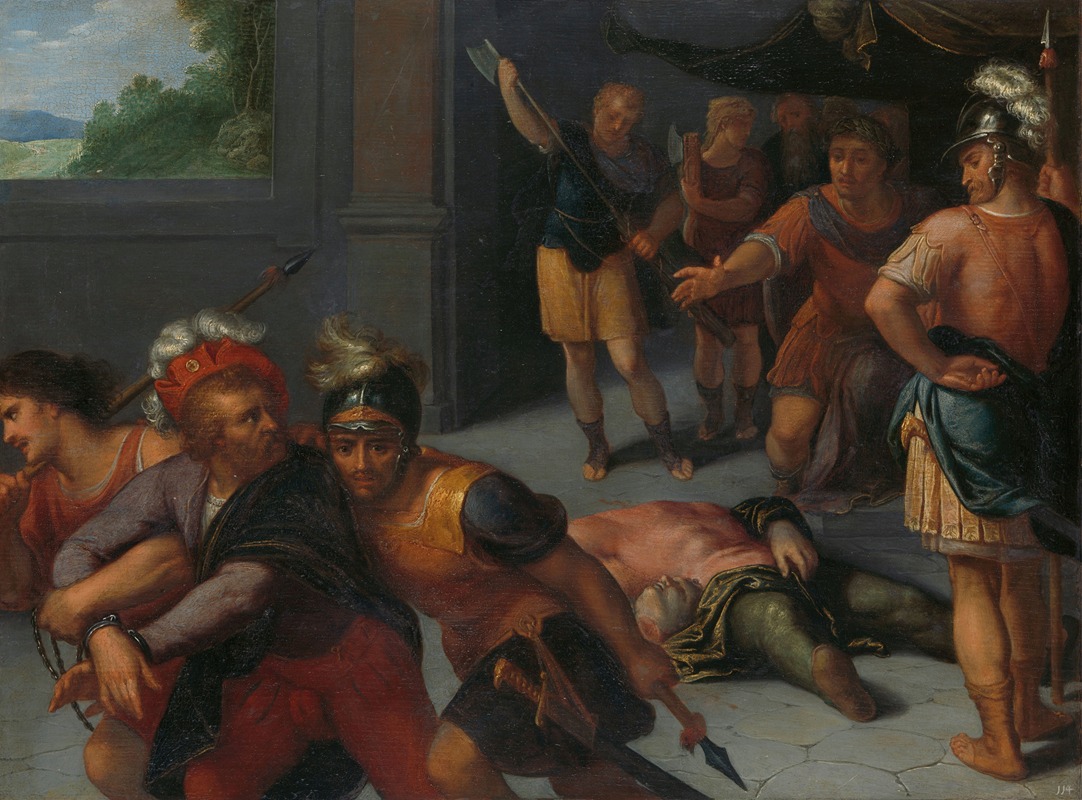
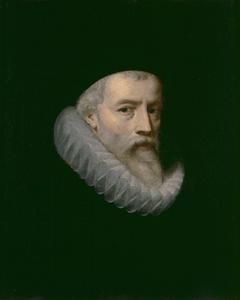
Otto van Veen, also known by his Latinized name Otto Venius or Octavius Vaenius, was a painter, draughtsman, and humanist active primarily in Antwerp and Brussels in the late 16th and early 17th centuries. He is known for running a large studio in Antwerp, producing several emblem books, and for being, from 1594 or 1595 until 1598, Peter Paul Rubens' teacher. His role as a classically educated humanist artist (a pictor doctus), reflected in the Latin name by which he is often known, Octavius Vaenius, was influential on the young Rubens, who would take on that role himself.
Van Veen was born around 1556 in Leiden, where his father, Cornelis Jansz. van Veen (1519–1591), had been Burgomaster. He probably was a pupil of Isaac Claesz van Swanenburg until October 1572, when the Catholic family moved to Antwerp, and then to Liège. He studied for a time under Dominicus Lampsonius and Jean Ramey, before traveling to Rome around 1574 or 1575. He stayed there for about five years, perhaps studying with Federico Zuccari. Carel van Mander relates that van Veen then worked at the courts of Rudolf II in Prague and William V of Bavaria in Munich, before returning to the Low Countries. In Brussels, he was court painter to the governor of the Southern Netherlands, Alexander Farnese, Duke of Parma until 1592, and then active in Antwerp.
After becoming a master in the Guild of St. Luke in 1593, van Veen took numerous commissions for church decorations, including altarpieces for the Antwerp cathedral and a chapel in the city hall. He also organized his studio and workshop, which included Rubens. Van Veen's connection to Brussels remained, however, and when Archduke Ernest of Austria became governor in 1594, he may have aided the archduke in acquiring important Netherlandish paintings by the likes of Hieronymus Bosch and Pieter Bruegel the Elder. The artist later served as dean in two prominent organizations in the city, the Guild of St. Luke in 1602, and the Romanists in 1606.
In the seventeenth century, van Veen often worked for the Archdukes Albert and Isabella, but never as their court painter. Later paintings include a series of twelve paintings depicting the battles of the Romans and the Batavians, based on engravings he had already published of the subject, for the Dutch States General. He had two brothers who were painters; Gijsbert van Veen (1558–1630) was a respected engraver and Pieter was an amateur. His daughter Gertruid was also a painter, and he was the uncle of three pastellists, Pieter's children, Apollonia, Symon, and Jacobus. He died in Brussels.
Arnold Houbraken considered Van Veen to be the most impressive artist and scholar of his day and put his portrait on the title print of his three volume book De groote schouburgh der Nederlantsche konstschilders en schilderessen.
